
Roots
To truly understand how textured hair’s unique architecture calls for specific moisture, we must first listen to the whispers of generations past. Our conversation begins not in a laboratory, but in the echoes of communal grooming rituals, in the wisdom passed from elder to child beneath the African sun. Textured hair is not merely a collection of strands; it is a living archive, each coil holding the history of resilience, cultural expression, and ancestral ingenuity.
What we seek to understand about its moisture needs today is, at its heart, a rediscovery of knowledge held by our forebears. This exploration honors the inherent connection between biology and Black and mixed-race heritage , revealing how the very structure of these strands has always dictated a path of thoughtful care.

What Constitutes the Physical Makeup of Textured Hair?
The visible portion of hair, the shaft, which emerges from the scalp, carries the blueprint of its moisture relationship. Unlike straight hair, which typically grows from a round follicle, textured hair sprouts from an oval-shaped follicle . This elliptical cross-section causes the hair strand to grow in a characteristic spiral, creating a series of curves, kinks, and coils. This profound curvature means that natural oils, produced by the scalp, face a challenging journey down the hair shaft.
Consequently, textured hair often experiences a natural predisposition to dryness, as the scalp’s protective sebum struggles to evenly coat each strand from root to tip. The outer layer of each hair strand, the cuticle , composed of overlapping scales much like roof tiles, also plays a defining role.
Textured hair, stemming from an oval follicle and growing in spiral patterns, naturally requires diligent moisture care because scalp oils struggle to travel its full length.
Research indicates that textured hair, particularly Afro-textured hair, possesses fewer cuticle layers compared to Asian hair, though sometimes more than Caucasian hair, making its protective outer sheath potentially more vulnerable to environmental stressors and daily manipulation. A healthy cuticle lies flat, reflecting light and sealing in moisture. When this cuticle is raised or damaged—a common occurrence for drier hair—moisture escapes with greater ease, leading to brittleness and breakage. It is a delicate balance, one that ancestral practices instinctively sought to maintain.

How Did Early Societies Categorize Hair’s Diverse Forms?
Modern hair classification systems, like the Andre Walker Hair Typing System, categorize hair from straight (Type 1) to tightly coiled (Type 4C), further nuanced by sub-types. While these systems offer a contemporary language for describing curl patterns, their origins are worth examining. Some early 20th-century systems, regrettably, arose from racial categorization efforts aimed at defining proximity to whiteness. However, long before these formal categorizations, African societies developed their own intricate systems for identifying hair, not based on a singular, rigid scale, but on a holistic understanding of its appearance, feel, and the community it served.
In pre-colonial Africa, hairstyles were a profound visual language, conveying age, marital status, social rank, wealth, tribal affiliation, and even spiritual beliefs . The particular tightness of a coil, the way hair absorbed water, or its natural luster would have been observed and understood within a practical, communal context, guiding care rituals. This ancestral classification was less about numerical assignment and more about recognizing hair as a dynamic part of identity and communal belonging.
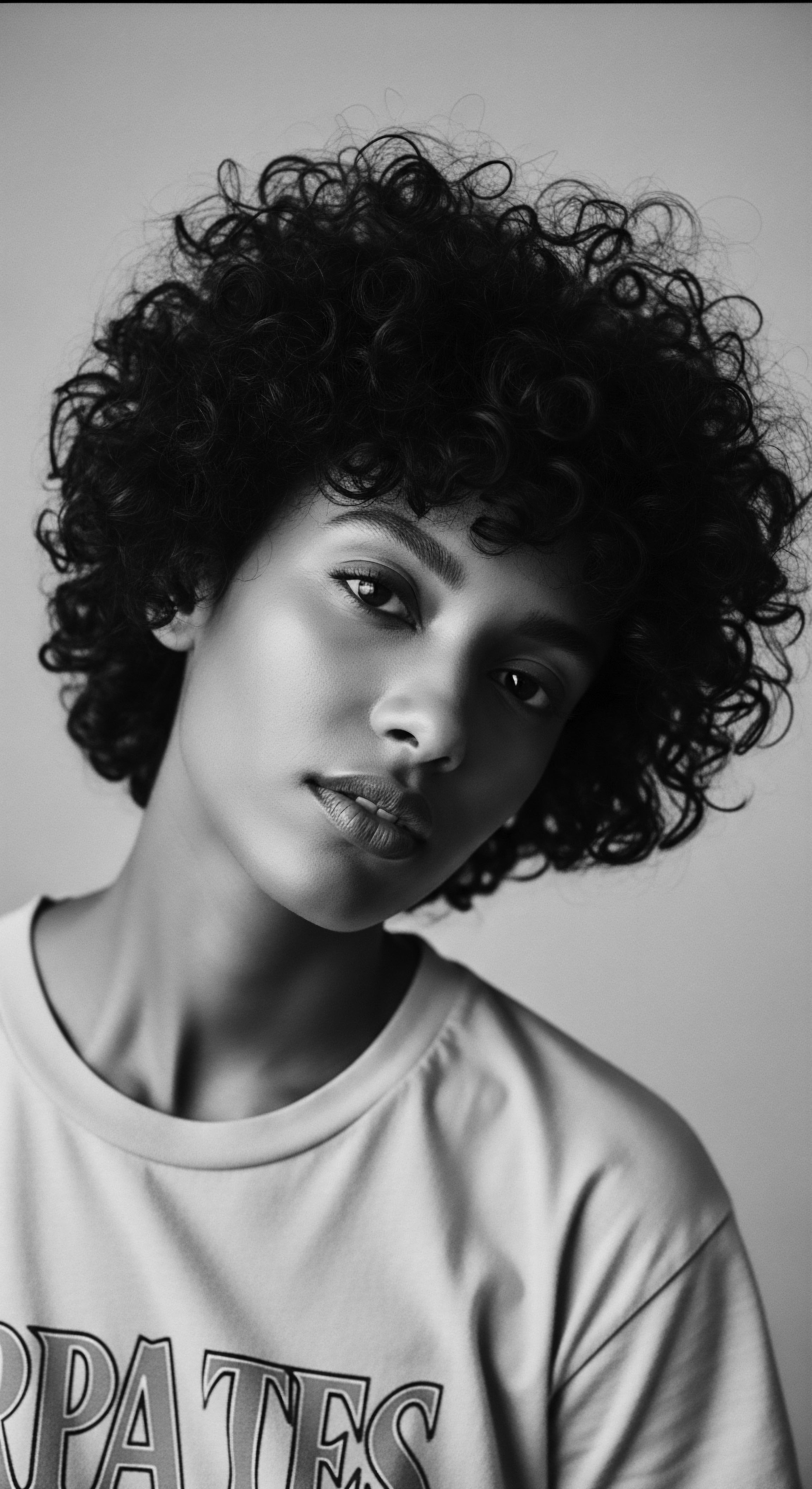
Ancestral Terms and Hair’s Moisture Needs
The historical lexicon surrounding textured hair often speaks directly to its needs. Words were not merely descriptors; they were instructions, reflections of an enduring wisdom. Consider the term ‘kinky’ , an English adjective used to describe Afro-textured hair, sometimes associated with its tight, spring-like coils.
This very quality, the tight coiling, physically impedes the natural downward flow of sebum, amplifying the hair’s need for external moisture. The ancestral use of natural butters, herbs, and powders speaks to an early recognition of this challenge.
- Shekere ❉ In some West African traditions, referring to hair that is thick and dense, hinting at its capacity for volume, which often comes with a higher surface area and greater moisture evaporation.
- Maji ❉ A Swahili word for water, universally understood as the ultimate hydrator. Its importance in daily rituals for softening hair and preparing it for styling was paramount.
- Duku ❉ A term for headwraps in Ghana, whose protective function against the elements indirectly aided in maintaining hair’s moisture balance, a practice spanning centuries.
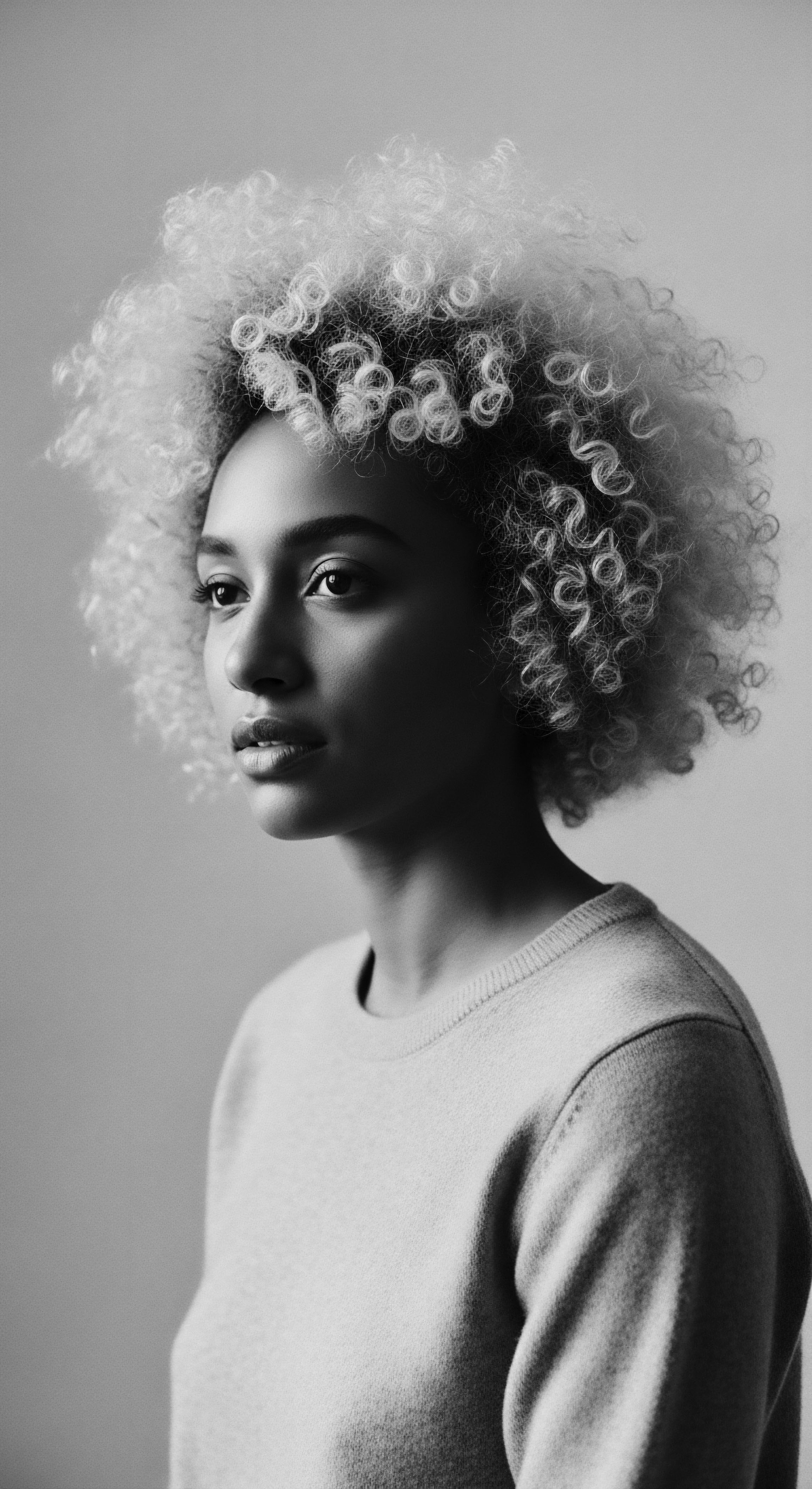
How Did Historical Environments Shape Hair Care?
Hair growth cycles, while fundamentally biological, were also influenced by ancestral environmental and nutritional factors . Across the diverse landscapes of Africa, from the arid Sahel to humid coastal regions, communities adapted their hair care. The availability of local botanicals—shea trees, palm trees, baobab—directly shaped the moisture-retaining ingredients utilized. For example, in dry climates, the inherent tendency of textured hair towards dryness would have been exacerbated, leading to robust practices involving rich emollients.
The seasonal changes, too, likely informed the frequency and intensity of hair care, with certain times of year demanding more rigorous moisture application. The traditional methods of preparing and applying these natural substances, often involving prolonged periods and communal effort, reflect a deep, intuitive understanding of hair’s persistent thirst.
| Aspect Hair Texture |
| Ancestral Observation Identified by feel, appearance, and communal association, informing how much natural oil might coat the strand. |
| Aspect Moisture Retention |
| Ancestral Observation Recognized as essential for hair's malleability and strength, leading to the use of water and natural butters. |
| Aspect Scalp Health |
| Ancestral Observation Linked to overall wellbeing, with practices promoting circulation and product distribution. |
| Aspect The enduring legacy of these observations continues to guide effective care for textured hair. |

Ritual
The very act of styling textured hair has always been, and remains, a sacred ritual, a living testament to ancestral ingenuity and the enduring spirit of cultural identity . From the elaborate coiffures of ancient African kingdoms to the protective designs worn by those in the diaspora, each style carries a story of how hair’s structure and its need for deep moisture were understood and honored. The hands that braided, twisted, and adorned were not merely fashioning; they were practicing a heritage of care, ensuring the longevity and vitality of each strand. The relationship between hair structure and moisture needs finds perhaps its most vivid expression in these time-honored practices.

What is the Historical Purpose of Protective Styles?
Protective styles like braids, twists, and locs are far more than aesthetic choices; they are historical solutions to hair’s structural challenges and moisture retention. Dating back to at least 3500 BCE in various African cultures, these styles served as forms of identification, status markers, and, crucially, as means to preserve hair health. The tightly coiled nature of textured hair, prone to tangling and breakage, benefits profoundly from being manipulated into styles that minimize daily handling and exposure to environmental stressors. This intentional reduction of manipulation, a core principle of protective styling, directly reduces moisture loss by keeping the hair shaft contained.
Protective styles, a tradition steeped in centuries of heritage, offer textured hair a respite from daily manipulation, allowing it to retain precious moisture.
During the transatlantic slave trade, when enslaved Africans were often stripped of their cultural markers, braiding became a quiet yet profound act of resistance and preservation of identity. These styles were not only practical for arduous labor but also secretly used to convey messages or even hide seeds for survival. This deep history underscores how protective styles were intrinsically linked to survival and the preservation of African identity and its intrinsic need for moisture retention in harsh new climates.
The traditional approach to these styles always involved careful preparation. Water, as the fundamental hydrator, would be applied to soften the hair before the application of natural oils and butters , which would then seal that moisture within the braided or twisted strands. This layered application, a precursor to modern moisture-sealing methods, demonstrates an intuitive understanding of the hair’s porous nature and its tendency to lose water.

How Do Natural Styling Techniques Celebrate Coil Patterns?
Beyond protective styles, techniques that define and celebrate the natural coil pattern also rely heavily on moisture. Wash-and-gos, twist-outs, and braid-outs are contemporary expressions of an older yearning to let hair exist in its most organic state. These methods showcase the hair’s inherent beauty, but they are only truly vibrant when the hair is adequately hydrated.
The elasticity and definition of a curl depend on its internal water content. Without sufficient moisture, coils appear shrunken, dry, and lack the spring that gives them their distinct character.
Traditional methods for encouraging natural curl definition often involved simply saturating the hair with water and allowing it to dry with minimal disruption, or applying plant-based gels derived from flaxseed or okra, substances that provided hold while maintaining pliability. These historical practices underline the consistent recognition that water is the primary agent for activating and allowing coils to fully express themselves, with emollients following to preserve that state.

The Historical Role of Wigs and Hair Adornments
The use of wigs and extensions holds a venerable place in African cultural heritage , dating back to ancient Egypt, where elaborate headdresses and hair extensions symbolized status, power, and beauty. These were not merely fashion statements; they often served a protective function, shielding natural hair from the elements or allowing it to rest and retain its moisture and length underneath. The skill involved in crafting and maintaining these adornments reflects a profound respect for hair as a canvas and a repository of meaning.
The preparation of natural hair beneath these historical extensions would invariably involve moisturizing agents to prevent dryness and breakage during long wear. The wisdom of these practices, which ensured the hair’s health even when covered, speaks to an enduring understanding of its needs.
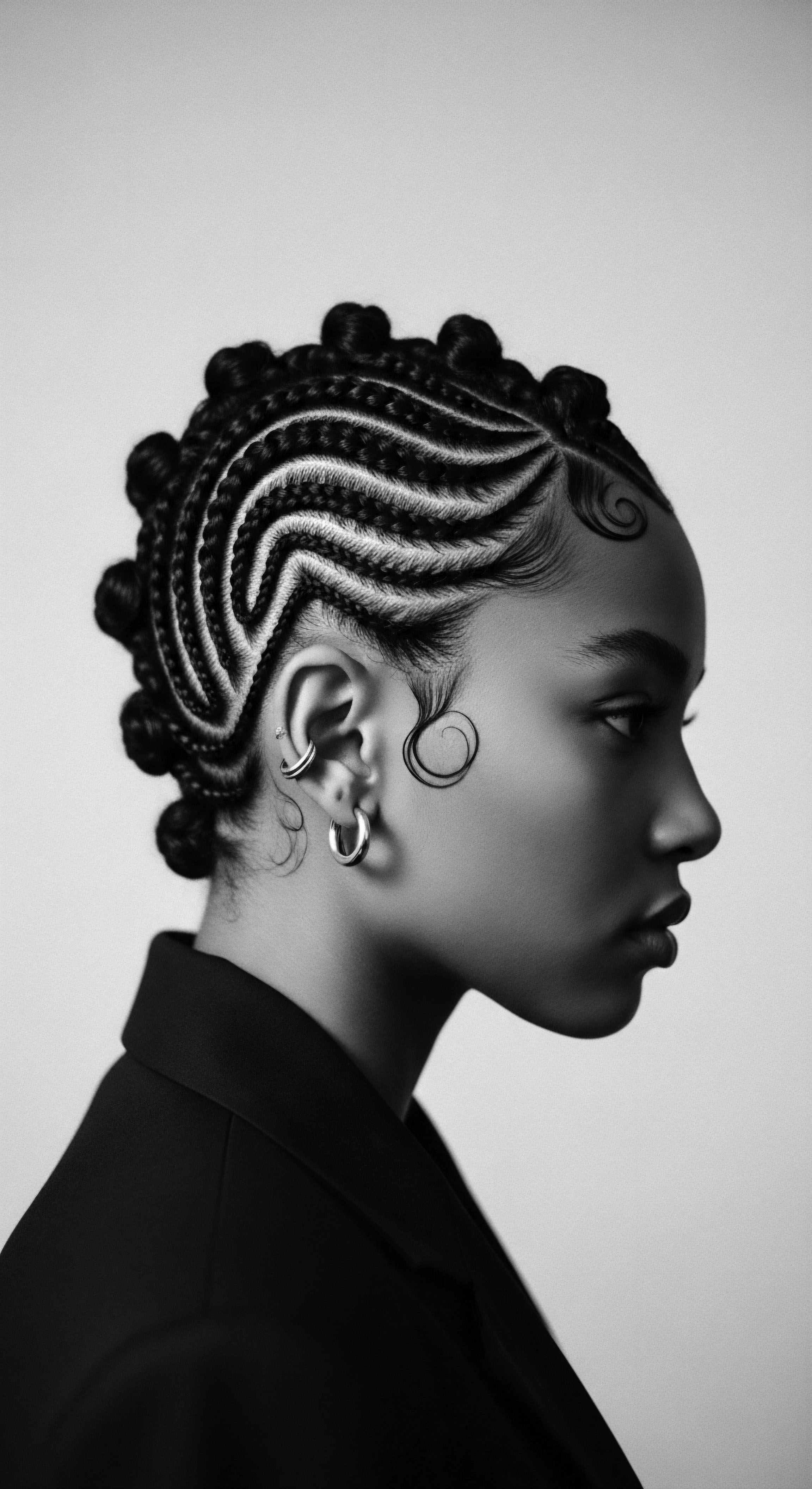
Ancestral Tools and Their Application to Moisture
The tools used for hair care, passed down through generations, were designed to work in harmony with textured hair’s unique structural demands, especially concerning moisture distribution and detangling.
- Wooden Combs ❉ Crafted from local hardwoods, these combs often featured wide, smooth teeth, ideal for gently navigating the natural bends and coils of textured hair, particularly when wet and softened with water or conditioning agents. This minimized breakage and allowed for even product distribution.
- Gourd Scoops and Bowls ❉ Utilized for mixing and applying traditional hair masks and conditioning concoctions made from plants and butters. The smooth, non-reactive surfaces ensured the integrity of the natural ingredients, which were often rich in moisture-binding compounds.
- Fingers and Hands ❉ Perhaps the most universal and enduring tools, the human hand was and remains central to applying emollients, detangling, and styling. The warmth of the hands helps to melt and distribute butters, promoting absorption and sealing in moisture. The tactile sensitivity allows for gentle manipulation, respecting the hair’s fragility when dry.
The preference for detangling hair when it is damp or saturated with water, often with the fingers or wide-tooth combs, is a practice deeply rooted in ancestral wisdom and validated by modern understanding of how tightly coiled hair becomes more pliable and less prone to damage when moisturized. This synergy between ancient method and contemporary knowledge underscores a timeless truth about textured hair’s intrinsic moisture relationship.
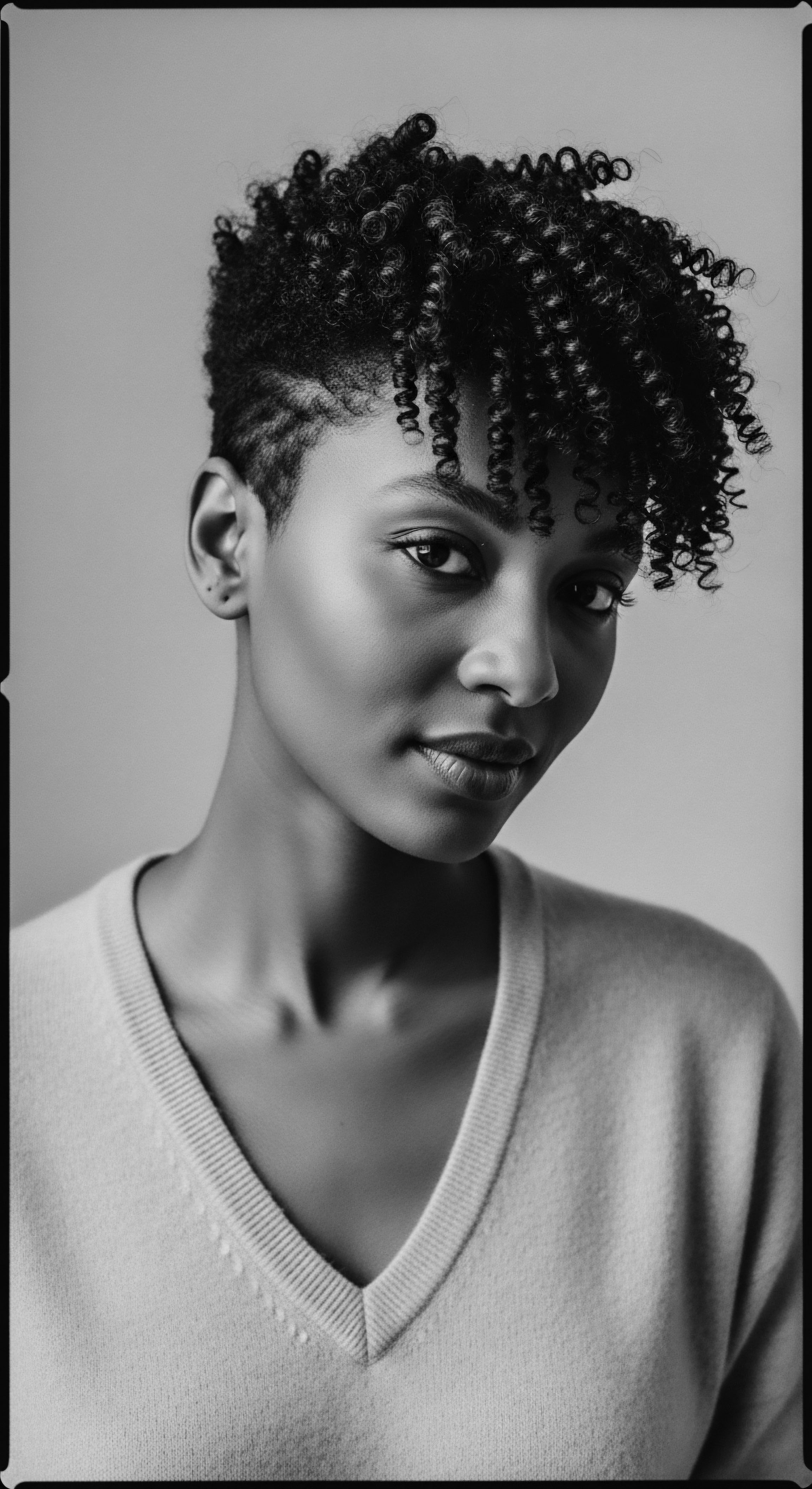
Relay
To truly grasp textured hair’s deep need for moisture is to engage in a conversation that spans continents and centuries. It is an understanding that moves beyond surface-level aesthetics, connecting the fundamental biology of each strand to the profound ancestral wisdom that has long guided its care. The structure of textured hair, with its characteristic coils and flattened cross-sections, presents inherent challenges to moisture retention. Our dialogue here explores how this biological reality has been met, from ancient remedies to contemporary scientific insights, always through the lens of heritage .
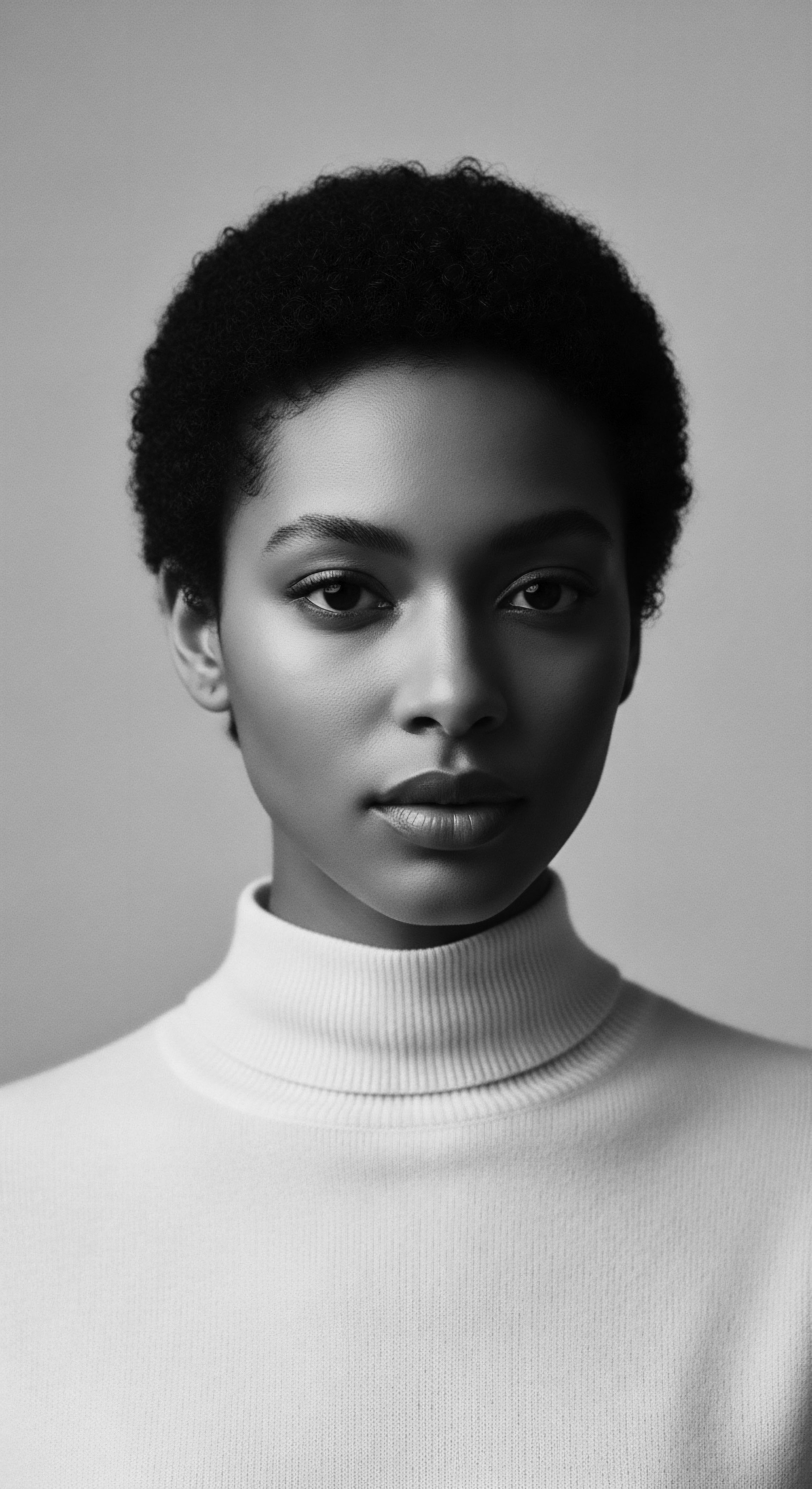
How Does the Coiled Structure Affect Moisture Retention?
The distinctive elliptical shape of the textured hair follicle causes the hair shaft to grow in a tight, spiraling helix. This helical growth pattern, particularly prominent in Type 4 hair textures, creates numerous points where the hair bends back upon itself, rather than flowing in a straight line. These many curves mean that sebum, the scalp’s natural moisturizing oil, faces significant resistance as it attempts to travel down the hair shaft from the scalp to the ends. Consequently, the ends of textured hair often remain drier than the roots, making them more susceptible to brittleness and breakage.
Beyond the journey of sebum, the cuticle layers of textured hair play a critical role in moisture dynamics. While some research suggests Afro-textured hair has a lower radial swelling percentage in water despite a high lipid content, other studies indicate differences in cuticle arrangement and number of layers, influencing how water is absorbed and retained. A healthy, intact cuticle, with its scales lying flat, acts as a barrier, preventing excessive moisture loss from the hair’s inner cortex.
When the cuticle is lifted or compromised, water can escape rapidly, leading to the sensation of dryness, a lack of shine, and susceptibility to tangles. The very physical characteristics that give textured hair its unique beauty also necessitate a diligent approach to hydration, making the replenishing of moisture a constant, vital act.

What Ancestral Practices Align with Moisture Science?
The historical record, supported by modern analysis, reveals a powerful alignment between ancestral hair care practices and the scientific understanding of moisture needs. For millennia, communities across Africa utilized natural ingredients rich in emollients and occlusives, instinctively addressing the hair’s predisposition to dryness.
A compelling historical example lies in the widespread use of shea butter (from the Vitellaria paradoxa tree) and red palm oil (from Elaeis guineensis) in West African communities. These natural ingredients, used for centuries, possess occlusive and emollient properties that directly address moisture needs. The wisdom of their application, passed down through oral traditions and communal rituals, recognized their ability to protect and nourish hair long before modern chemistry described their lipid structures.
The enduring use of shea butter and red palm oil across West Africa exemplifies ancestral knowledge of moisture sealing, validated centuries later by modern lipid science.
In a profound illustration of this inherited wisdom, the application of plant-derived emollients like shea butter and red palm oil was not merely cosmetic; it served as a foundational practice for preserving hair’s inherent moisture, particularly in dry, arid climates. This ancestral knowledge recognized the occlusive properties of these natural compounds long before modern chemistry described their fatty acid structures (Mato & Kawa, 2017). This practice, a testament to indigenous science , directly countered the effects of environmental dryness on hair’s structure, creating a protective barrier that slowed water evaporation. Research supports that unrefined shea butter, for instance, contains significant amounts of fatty acids such as oleic, stearic, linoleic, and palmitic acids, which are known to seal moisture into the hair strand and reduce frizz.
Similarly, red palm oil is packed with vitamins A and E, and carotenes, offering deep nourishment that aids in moisture retention and reduces breakage. The intentional mixing of these oils and butters, often warmed and applied to damp hair, created a lasting shield against environmental moisture loss.
Consider also the traditions of the Basara Arab women of Chad, who have used Chébé powder for generations. This mixture, applied as a paste to damp hair, does not promote growth from the scalp but significantly aids length retention by strengthening the hair shaft and sealing the cuticle, thereby locking in moisture and preventing breakage. This practice, performed in time-consuming rituals often involving braiding, showcases a deep understanding of how to maintain hair integrity through consistent moisture sealing in a dry environment. The generational transmission of such practices speaks to their proven efficacy, embodying a holistic approach where hair care is intertwined with daily life and environmental adaptation.
The evolution of these practices into contemporary regimens often involves adapting ancient techniques to modern contexts, yet the core principle of layering moisture and sealants remains unchanged. The popular “Liquid, Oil, Cream” (LOC) method, for instance, echoes these ancestral layering practices, applying water, then oil, and finally a cream to lock in hydration. This modern method, consciously or unconsciously, mimics the age-old sequence of hydrating and sealing that allowed textured hair to thrive across diverse ancestral landscapes.
| Aspect Moisture Source |
| Ancestral Practice (Historical) Rainwater, natural springs, plant hydrosols applied directly. |
| Modern Understanding (Scientific) Clean water, humectant-rich leave-ins, hydrating sprays. |
| Aspect Sealing Agents |
| Ancestral Practice (Historical) Shea butter, cocoa butter, red palm oil, animal fats, various plant oils. |
| Modern Understanding (Scientific) Hair oils (jojoba, argan), heavier creams, occlusive butters, silicones. |
| Aspect Application Method |
| Ancestral Practice (Historical) Manual application to damp hair, often with warming, followed by braiding or wrapping. |
| Modern Understanding (Scientific) LOC/LCO method, deep conditioning treatments, steam treatments. |
| Aspect Protective Measures |
| Ancestral Practice (Historical) Headwraps (Dukus, Tignons), cornrows, twists, communal styling for longevity. |
| Modern Understanding (Scientific) Satin bonnets, silk pillowcases, specific protective hairstyles, minimal manipulation. |
| Aspect The enduring principles of moisturizing and protecting textured hair remain constant, bridging ancient wisdom with contemporary innovation. |
The deep lineage of this hair is etched in its very structure, demanding a care that speaks to its history. The spiral coil, though beautiful, makes the journey of natural oils from scalp to tip a slow and often incomplete one. This means the ends of textured hair, the oldest parts of the strand, are often the driest and most vulnerable. Understanding this fundamental aspect of its biology is crucial for any effective care regimen.

Reflection
The journey through textured hair’s intricate structure and its unwavering need for moisture is truly a profound meditation on heritage. Each coil, each strand, is a living record of resilience, a testament to the wisdom passed down through generations. From the elliptical follicle that shapes its very growth to the ancient practices of anointing with natural butters and shrouding in protective wraps, the relationship between hair and hydration has always been understood, often intuitively, within Black and mixed-race communities .
We see how ancestral ingenuity, born of necessity and deep observation, laid the groundwork for contemporary hair science, demonstrating that the ‘Soul of a Strand’ is, indeed, a deep well of inherited knowledge. As we continue to honor and care for textured hair, we are not simply tending to a physical entity; we are upholding a legacy, reinforcing a connection to a vibrant, enduring past, and collectively shaping a future where every textured crown is celebrated for its inherent beauty and wisdom.

References
- Mato, G. & Kawa, R. (2017). The Science of Black Hair ❉ A Comprehensive Guide to Textured Hair. Milani Hair.
- Belgravia Centre. (n.d.). Hair Types and Race Differences. Retrieved from https://www.belgraviacentre.com/hair-types-race-differences/
- Obscure Histories. (2024). Ancient Gems ❉ A Historical Survey of African Beauty Techniques. Retrieved from https://obscurehistories.com/ancient-gems-a-historical-survey-of-african-beauty-techniques/
- Team True Beauty. (2023). The Significance and History of Black People Bonnets. Retrieved from https://teamtruebeauty.com/the-significance-and-history-of-black-people-bonnets/
- Pugliese, P. T. (2010). The Physiology of the Skin. Allured Publishing Corporation.
- Franbourg, A. Hallegot, P. Baltenneck, F. Toutain, C. & Leroy, F. (2003). Current research on ethnic hair. Journal of the American Academy of Dermatology, 48(6), S115-S119.
- Dawber, R. P. R. (2002). Hair & Scalp Disorders ❉ Common Problems and Their Management. Blackwell Science.
- Gavazzoni Dias, M. F. R. (2015). Hair Cosmetics ❉ An Overview. International Journal of Trichology, 7(1), 2-15.
- Robins, A. (2001). The African American Hair and Skin Care Book. Citadel Press.
- Kelly, G. (2012). The Science of Natural Hair ❉ A Simplified Guide to Healthy, Beautiful Hair. NaturallyCurly.com.
